
Facility Management - Acronyms and Descriptions
FM : Facilities Management
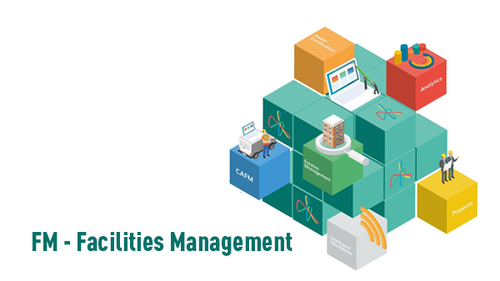
Facilities Management is a professional management discipline which provides efficient support services to a built environment by effectively coordinating with people through a process and integrating with technology for safe and smooth functionality of a facility. Hence building, people process and technology are the 4 main pillars of facility management. The (ISO) defines facility management as the "organizational function which integrates people, place, process and technology within the built environment with the purpose of improving the of people and the productivity of the core business in conjunction with the auxiliary as well as the support services.
The main facilities management functions are
- Maintenance Management
- Operations Management
- Finance Management
- Project Management
- Property Management
- People management
- Effective communication
- Emergency Handling
- Technology Integration
Facilities Management Services are categorized as hard Services and Soft Services. Hard services are connected to the physical alterations of a facility. Common examples for hard services are
- Plumbing
- Lighting and Electrical
- Fire Safety Systems
- Air Conditioning
Soft services make the workplace more secure and pleasant and help in making the premises a better place to work/live in. Common examples are,
- Pantry Support
- Housekeeping
- Pest control
- Landscaping
Now a days facility business has a rising expectation on the value of the service provided. Facility management team have started contributing in cost savings and return on investment. Large-facility managers now routinely use advanced Facility Management Solutions that manage the day today functions, property, Maintenance, Asset, Clients, Inventory and Finance
RCM : Reliability Centered Maintenance
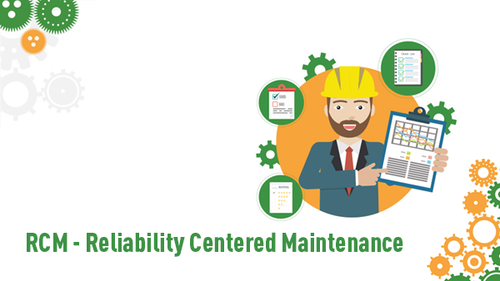
Reliability centered maintenance (RCM) is a strategy that is implemented to determine the maintenance strategies to be implemented to ensure that the physical equipment continues to perform without any failure. If an equipment is in running condition but output is less or than required, it would be considered failure. It can be any errors or defect which effects the day today operations in the facilities
The task of RCM is to identify the most effective maintenance technique to control and prevent the risk of failure / performance slowdown and impact in the facilities
The four objectives of RCM are
- To safeguard and maintain the system function
- Identify the mode of failures modes by which the equipments can be effected for a slowdown or failure
- Prioritize the identified failure modes. Top priority to be given to the critical failure modes that badly affects the facilities
- Identify and schedule the effective maintenance tasks as per the priority set
RCM Implementation
- Selection of equipment for RCM - Equipment selected for RCM analysis should be critical to operations. The cost of the equipment, cost of previous repair and the previous Preventive maintenance is to be taken in consideration
- Identify System Functions - Identify the primary functions of the equipment, its mode of operation and the desired performance level to meet the requirements of the customer
- Identify Failure mode - Identify and list out all the possible modes that the particular equipment selected for RCM can fail. A failure Failures can be poor performance, unintended functions, complete failure etc.
- Identify the causes of the failure modes - The causes for the mentioned failure has to be identified and listed out with the help of RCM experts
- Effects and Consequences of failure - In these steps the consequences of the equipment failure are to be identified. For Eg - whether the failure is a threat to the safety of operators or the environment, Is there any safety concerns with this failure?
- Determine Maintenance Tasks - Identify the maintenance tasks to be performed as per the criticality of the equipment to prevent it from complete failure. The facility Managers may opt for a CBM (Condition based maintenance) or a PM (preventive maintenance) as applicable according to the criticality of the failure. The facility managers may perform no maintenance, Reactive maintenance, or a Run-To-Fail (RTF). This type of maintenance assumes that failure is equally likely to occur in any part, and that a failure is not causing any harm to the operation. Redesign is done when failure of a system or piece of equipment has an unacceptable risk and none of the maintenance tasks can help in controlling or preventing the failure. RCM teams may have to replace or redesign the unit in these cases.
- Regularly review the maintenance recommendation - The maintenance recommendation has to be reviewed on a regular basis as mentioned in the maintenance recommendation to avoid further slowdown or failure of the equipment
CBM : Condition Based Maintenance
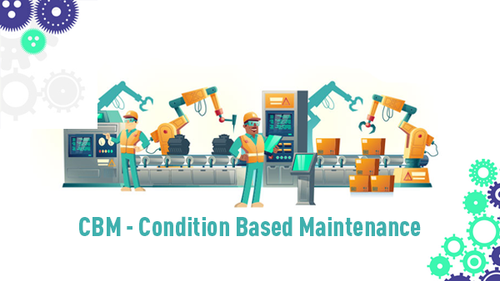
Condition based maintenance (also known as CBM) is a maintenance methodology that monitors the actual condition of an asset and helps to decide what maintenance operations are to be performed for that particular Asset. CBM involves tracking the condition of an operating equipment to analyze and understand the type of maintenance to be done and when it should be done. Signs of declining performance indicates the need for maintenance to be done to restore the equipment to it previous capacity. It is based on the assumption that most equipment will display some sort of indicators prior to an issue. Condition based Maintenance is performed only on slow down or performance issue of a particular equipment
The current condition of a particular asset is checked through:
- Visual inspections
- Scheduled Tests
- Performance data which is often gathered by keeping sensors and related tools
The data received through the above tests helps in assessing the performance of the assets or upcoming failures. Once the performance issues are monitored, maintenance activity may be proactively scheduled to correct the issue before the equipment fails completely or performance slows down drastically.
Condition based maintenance is found costly for tools like sensors, other related equipment maintenance tasks performed on an asset at fixed time intervals, regardless of its condition. And trained staff to monitor the data and decide what type of maintenance activity is to be done. CBM may also not easily detect the normal depreciation or wear and tear of a particular asset.
But it minimizes the chance of equipment failures and improves reliability
TBM : Time Based Maintenance
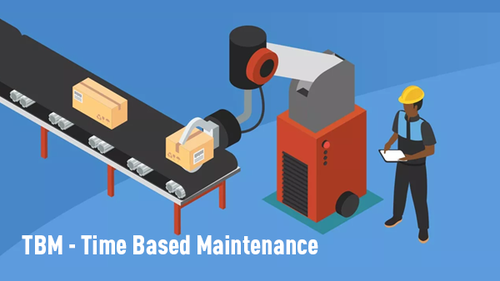
Time based maintenance also known as Clock based or Calendar based maintenance and it follows a strict timetable. TBM refers to routine maintenance tasks as per the timetable at regular time period, regardless of its condition. The goal of time-based maintenance is to prevent asset/equipment failure beforehand and improve asset performance.
Couple of examples for TBM are cleaning and servicing of Air Conditioners before the start of Summer, Monthly Inspection of fire extinguishers etc.
TBM does not require sensors or other related equipment to carry out the maintenance work. Also it doesn't require any extensive training thereby reducing the cost to a good extent.
time-based maintenance is mainly done to improve the performance and prevent failures on assets that are important to the facilities. Time-based maintenance is best suited for
- Bounded assets, such as fire safety equipment.
- (and critical components).
TBM maintenance is planned maintenance, as it must be scheduled in advance, which means it can be used with both predictive maintenance and preventive maintenance.
To execute TBM, a maintenance plan for a part that includes regularly performed inspections and maintenance is scheduled. Time-based Maintenance plans are an effective way to manage resources that can be reliably maintained by a time-based schedule, i.e. weekly, monthly or seasonally
PM : Preventive Maintenance
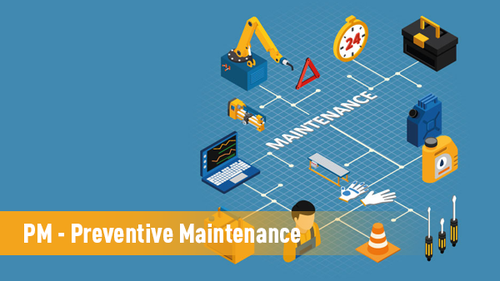
Preventive maintenance, also known as preventative maintenance, is a routine maintenance process scheduled on an equipment/asset to reduce the possibility of an equipment failure or unplanned downtime. PM is also referred to as time-driven or interval-based maintenance. Preventive Maintenance is always calendar based or usage based
An effective preventive maintenance program requires careful planning and scheduling of maintenance on regular intervals reducing the chance of equipment failure. PM strategy involves maintaining proper records of all the preventive maintenance tasks happening to an equipment. This helps in understanding the lifespan of the equipment and schedule maintenance tasks and replacement frequency. These records can help maintenance technicians anticipate the appropriate time to change parts and can also help diagnose problems before they occur. Some of the benefits of Preventive Maintenance are
- Provides for extended life of the building and grounds.
- Aesthetic qualities of the building and grounds are improved and maintained.
- Less Unplanned Downtime caused by any equipment failure
- Timely identification of building degradation that may otherwise be unnoticed.
- Reliability on equipments in the facilities
- Achieves reductions in energy consumption.
Examples of the common PM tasks in the facility equipments are
- Cleaning
- Painting
- Lubricating
- Replacement of all heating, ventilation, and air conditioning system air intake filters.
- Replacing Worn Parts
- Inspection, oil and filter changes, and repairs as needed, of the emergency generator
An effective and timely preventive maintenance program will reduce the amount of unplanned effort to a great extent. This will help reduce the unplanned maintenance activities for the facilities to a good extend
PdM : Predictive maintenance
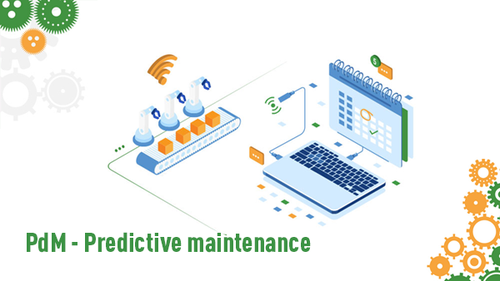
Predictive maintenance, as the name indicates, is a technique to predict the future failure point of an equipment, by keeping sensors /monitoring tools and techniques, so that the particular component can be repaired or replaced, just before it fails. Thus, equipment downtime is minimized and the component lifetime is maximized
The main advantage of PdM compared to preventative maintenance is that it examines and understands the current status of the equipment and the way with which the machine is working overtime whereas preventative maintenance is done in fixed time intervals (say 3Months, 6 months a year etc.) for the replacement of the equipments or its components. This may cause unnecessary replacements of the equipment which increases the cost to a large extent. Ideally, predictive maintenance keeps the maintenance frequency to be as low as possible without incurring costs associated with doing too much . Also predictive maintenance ensures that a maintenance notification is given for an equipment only when the device is approaching complete equipment failure. This reduces the total time and cost spent maintaining equipment.
Most assets do not force- stop on a day. The assets may show a lot of symptoms before it stops working. For E.g.; they may begin to use more power/ energy than expected. This is one of the indicators of the potential malfunction in an HVAC unit, and recognizing this problem with a predictive maintenance plan can help prevent the system from complete failure.
The most important aspect of PdM is the Internet of Things (IoT). IoT connects different assets and systems to connect, work together, analyze thereby evaluating the performance of the asset by capturing the data from the sensors and monitoring tools connected with the equipment. IoT identifies the criticality of the machine which may require any urgent attention and provide notification on the same.
- Sensors will collect measurements from equipment and record it conditions
- A data logging device will intercept the streams of data from the sensors and aggregate them in a central location.
- A dashboard or other interface will interpret the data and help you prioritize what to act on first
MTTR : Mean time to repair

MTTR as the name indicates, is the average time taken to repair an equipment until the equipment is restored to its complete functionality. MTTR measures how fast a facility can respond to unplanned failures and repair
Mean Time to Repair (MTTR) refers to the amount of time required to repair a system and restore it to full functionality.
MTTR = Total Maintenance Time / Number of Repairs
For Eg. If an equipment in a facility has undergone maintenance 2 times in a month and the total time inclusive of both the maintenance is One hour, then the MTTR = 1 hr/2=30 min.
MTTR helps in measuring the duration of the repairs and taking actions for a speedy recovery process. It helps facilities identify why maintenance processes may be taking longer time than is ideal and make more accurate decisions to fix the issues.
Taking too long for the equipment to be made functional impacts the facilities to a great extent. It also may mean that there is too much time between discovery and reporting of the failure. Hence the facility maintenance managers can come up with strong decisions on how efficiently the team will be able to respond to issues or failure threats.
Performing MTTR helps in identifying and helps in taking decisions on equipment purchases, maintenance schedules, the number of equipment to have in hand etc. For Eg - when the assets become older, it tends to take more time in repair and once its repaired the initial performance of the equipment may not be restored. By evaluating the MTTR the facilities will be able to make appropriate decisions whether to change the equipment or its components rather than repairing the same frequently. This helps the facilities to eliminate the inefficiencies that result in the performance slowdown of an equipment in the facility. It helps in decision making like whether to repair or replace the assets and helps in predicting the life span of the new systems
Apart from the Mean Time to Repair, MTTR also means
Mean Time to Recovery is almost similar to Mean Time to Repair, as it represents the time from system failure until the point at which the equipment returns to operation. Here it captures failure notification time and the time to diagnose the issue.
Mean Time to Respond is the time taken by a facility to neutralize an identified threat, from the moment it is notified, until it is completely fixed. This does not include any time taken from the initial failure to when you are first notified.
MTBF: Mean Time Between Failures

Mean Time between failures as the name indicates it is the average time between failures of an equipment. The term is used for the systems which can be repaired. MTBF does not consider the shut downs on scheduled maintenance like preventive maintenance. It captures unplanned failures, repairs or that that is essential to take the unit out of operation before it can be repaired.
The MTBF is calculated by taking the total time an equipment is operational by dividing it by the number of repair activities that occurred over the same period.
MTBF = sum of operational time / the number of failures at the same time.
Operational time is calculated in hours and is the number of similar equipment multiplied by the total number of hours each of the equipment is operational
For Eg- if there is an equipment which operates around 1000 hours in a year and there are 5 similar equipments tested the same operational hours, the total operational hour of the equipments would be 1000*5 = 5000 Hrs.
If for that particular year, the equipments failed 7 times, the meantime between failure is
calculated as
MTBF = 5000/5 = 714.28 Hrs.
MTBF predicts the average behavior of group of components
In the above scenario, the suggested hours are not that all the 5 equipment will work correctly for 714.28 hours. It only denotes the average time between the failures for these sets of assets is around 714 hours.
Low MTBF results in low performance of the equipment. To improve MTBF a proactive plan on the applicable maintenance has to be brought in place. Increase proactive maintenance like Preventive maintenance.
For Eg - As mentioned in the above example MTBF is mentioned as 714 hours. Hence it would be better to schedule a preventive maintenance every 650 - 700 hours to avoid upcoming failures
Also doing a CBM (Condition Based Maintenance) by setting up an early-warning system to find equipment issues before they lead to complete failure, you can increase MTBF and reduce unplanned downtime.
Doing a Root Cause Analysis to evaluate and understand why the equipment has failed helps in preventing that failure from happening in the future
Hence Tracking Mean Time Between failure helps in avoiding the unplanned failures to a great extent thereby increasing the performance of an equipment. MTBF helps in easier decision making. It helps in the inventory management by taking decisions like to replace a component or replace the entire unit if the maintenance is too frequent and cost of maintenance is too high. It helps is analyzing and understanding the feasibility for the cost to repair, replace the component or purchasing new equipment.
MTTF : Mean Time to Failure

MTBF calculates the reliability of the repairable equipment while MTTF calculates the average amount of time a non-repairable asset function before it fails. If MTTF metric is used, it means the machine is completely failed or in high danger or a component of the equipment is failed which results in drastic slowdown of performance, where repairing of that particular equipment is not an option at all. In short, MTTF is the average life of an equipment.
MTTF is calculated by dividing the total operational time by the number of units that fail irreparably.
MTTF = Total Operational hours of the similar equipment / the number of units failed beyond repair.
If we take a basic example of Electric Bulbs, if there are 5 Bulbs with Operational Hours, 1000, 1020, 1010,980, 990 each, the total operational hours are 5000 Hrs. Since the number of bulbs in this example is taken as 5 the Mean Time to Failure, MTTF = 5000/5 = 1000 Hrs.
If the failures can be foreseen with the data and figures using MTTF, the possible actions can be taken before an equipment falls into failure. Unlike previous traditional practices there is no scope to go with the assumptions. Strict possible measures have to be taken by the facility maintenance team to get the complete and accurate data for the process to completely rely on.
MTTF can be a vital metric in Purchase Management in making decisions about purchasing the equipment or its components. High MTTF can be acquired by purchasing standard and durable equipment/components which lessen the time, resources and cost in purchasing the equipment. It also plays an important role in Inventory Management, as the equipment can be purchased as per the MTTF hours calculated. Considering the above example, the MTTF calculated is 1000. The equipment can be purchased after 900 hours considering the purchase time, replacement time etc.
Hence to summarize, MTTF is a key metric for non-repairable equipment/components to reduce the down time and cost thereby increasing productivity.
RTF : Run to Failure
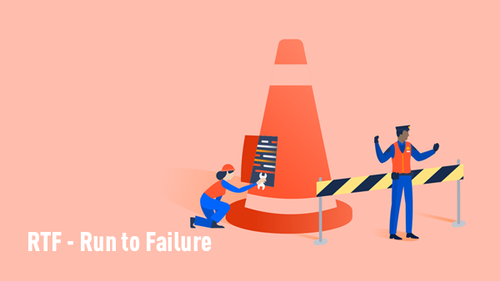
Run to failure as the name indicates the equipment is allowed to continue to operate till it fails. This is a maintenance strategy known as fit and forget. It is an unplanned activity and hence it is reactive. There are no maintenance tasks done for this asset until the equipment fails.
This approach is given to the equipments which are
- Low value equipments
- Short Life Assets
- Disposable Assets
- Non Critical Assets
- Non Maintainable Assets
- Durable Assets
The benefits of Run to Failure Strategy are
There is no much planning required in this case since there is no preventive maintenance or other types of maintenance tasks scheduled for these types of equipment. There is a major advantage of time because of no maintenance strategy impacting the advantage of no scheduled maintenance cost. Also the RTF has no major complexity, hence it is easy to implement the same in the facilities.
It is really critical to have spare equipment / spare components and a proper maintenance staff available to replace the failed equipment in a timely manner.
WO : Work Order

A work order is a document that provides all the information about a maintenance task which includes the Location, task to be completed, the person assigned, the time to complete the task. can be defined as the proper and timely processing of work orders. An effective work order solution helps to have a paper free tracking of the work order and makes it simple to manage the entire work order process with a few clicks.
A good Work Order must mandatorily contain the following details.
- Location - The Work Order should contain the exact location in the facility where the maintenance has to be done
- Details of the Person - The details of the person who raised the issue has to be mentioned in the WO
- Equipment - The details of the equipment to undergo the maintenance has to be captured.
- Issue Details - The facility manager of the tenant should give a brief of the issue faced for that particular equipment
- Assigned to - The technician whom the issue is assigned for repair is to be updated
- Work Order Status - The work order status should be updated for the proper tracking
Work order management serves as an essential factor for the facility manager and keeps equipment issues tracked and repaired on time to keep it functioning at its best. The main goal of a work order is to organize the asset information and help facilities personnel complete issue tracking and maintenance as effectively and efficiently as possible.
IWMS : Integrated Workplace Management System
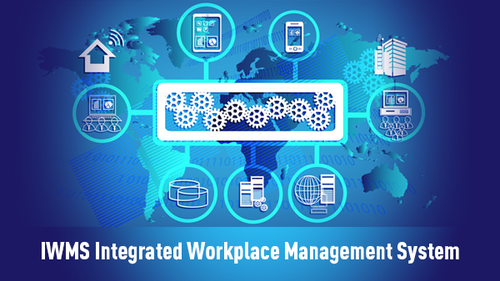
Integrated Workplace Management System (IWMS) is a software platform that helps facilities managers to simplify the complex facility operations by optimizing the workplace resources and keep their workforce engaged. The system very effectively improves efficiency of the facility operations and reduces the cost incurred to a great extent thereby increasing the business productivity.
Core functional areas of IWMS
- Real estate management
- Capital project management
- Facilities management
- Maintenance management
- Sustainability and energy management
Benefits of Integrated Workplace Management System
1.Space Management
IWMS effectively envisages and manages the facility space which helps in delivering quality tenant/resident experience. If the facility has several spaces full of residents, IWMS ensures every square foot of space is purposefully utilized.
- Reduce Cost
An efficient IWMS captures data from IoT sensors which helps in accurate and real time data on space occupancy. This helps the facility managers have a better view of the occupancy data which helps understanding the sources of unutilized or waste spaces and taking better actions on those. Also the prompt and timely data will help to reduce the labor cost also to a large extent.
- Effective Maintenance
An effective IWMS makes building maintenance more efficient by the data captured on sensors and performing reactive maintenance on time. The solution is used to schedule preventive maintenance tasks, establish predictive maintenance processes, create work orders based on the issue thereby having effective maintenance management
- Efficient Customer Service
Automating and managing the task in scheduling the maintenance issues, tracking and solving those issues as per the priority helps in providing an efficient customer service to the residents.
5.Accurate Reporting
Accurate data, centralizing all the facilities data into a single system helps in getting the required reports with a click of a button which helps in prompt management decision making.
CAFM : Computer-Aided Facilities Management

Computer Aided Facility Management (CAFM) is a software solution that automates and manages the facilities management functions. The software manages long term planning of facility spaces and infrastructure. It manages all the major facility functions like
- Space Management
- Property Management
- Work Order Management
- Reservation Management
- Reactive Maintenance
- Planned Maintenance Management
- Asset Management
- Support Services
Benefits of CAMS includes the following
- Streamlined Facility Management Process
- Effective space utilization
- Cost Saving
- Improved Project Planning
- Accurate Management Reports
- Manage Budgets
- Effective Time Management
EAM: Enterprise asset management

Enterprise asset management (EAM) is the process of managing the complete lifecycle of physical assets resulting in their extended equipment life and improved efficiency, reducing cost and increasing productivity. The solution provides all the information about the equipment starting from design, procurement, Installation, asset location, Date and time of maintenance, the person who uses the asset, maintenance till its disposal.
The benefits of EAM includes
- Reduce Cost
- Increased Productivity
- Streamline the asset management process
- Optimize business value
- Maximize asset performance
- Helps in effective decision making
- Reduce unplanned downtime
- Enhanced Return on Investment
Functions of good Enterprise Asset Management Includes
Asset Life Cycle Management Handles the entire life cycle of an asset in a facility from its planning to disposal
Materials Management Gives a complete view of the inventory procurement and helps the facility managers in understanding the demand for the materials. It manages all the MRO inventories like repair tools, lubricants, cleaning materials etc.
Work Order Management EAM solution tracks and manages the work orders assigned to the technician from creation of the work order to report of the completion of the work order.
Maintenance Management EAM automates the asset monitoring thereby tracking the conditions of the asset which helps in selecting the proper maintenance type and scheduling it on time.
Supply Chain Management Asset procurement, Inventory Management, Materials Management
Financial Management - EAM solution gathers all the financial activities taken such as Work Orders, Purchase etc and provide with the detailed management reports. A good EAM also integrates with the facilities accounting software to help in managing the accounting process
CMMS: Computerized Maintenance Management Systems
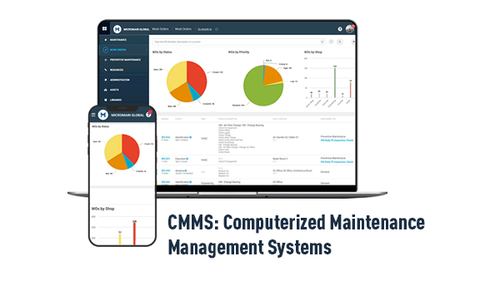
A Computerized Maintenance Management Systems focuses on the maintenance of equipment in facilities. using a work order system, along with preventive and predictive maintenance. They also track asset location and other details.
A good CMMS solution manages the following
- Asset Performance
- Maintenance Management
- Work Order Management.
- Inventory Management
Benefits of CMMS
Low Equipment Downtime - Automated and proper tracking of maintenance activities by doing the applicable maintenance for the facilities in avoiding equipment break-down. This helps in improving the reliability of the assets thereby helping in having a higher life time for the equipment.
Increased Productivity - Identifying the proper maintenance activities to be done for the particular equipment and having the proper tacking of the same helps in increase in the increase in the productivity. The periodic maintenance activities like preventive maintenance helps to have an improved productivity by scheduling and doing the PM on a timely basis
Cost Control - Effective use of CMMS helps in reducing the cost to be spent on the inventory by proper maintenance activities and keeping the equipments in very good condition
Inventory Control - CMMS helps in keeping an effective management of inventories in a facility. This helps in keeping an effective track of the equipment and components and its consumption. Also inventory level is managed so that the equipment will be purchased if the inventory level is below a limit.
Manager/Customer Satisfaction - The tracking and assigning of Work Orders as per the priority and providing solution for the same at the assigned time with a proper notification on the completed work orders helps the Facility managers to a great extent resulting in high customer satisfaction.
SBS : Sick Building Syndrome
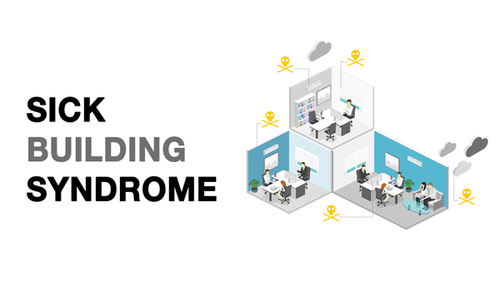
The sick building syndrome (SBS) is used to describe a situation in which the residents of a building experience health Issues or discomfort to the time spent in the building. The specific reasons for SBS is actually unknown. Also there is no o specific illness that can be identified.
The major causes of SBS can be
- Headache and dizziness
- Poor Concentration
- Irritation in the skin
- Body Pains
- Nausea
- Fatique
To list a few of the factors that the facility managers may consider in the facilities include the following
- Dedicated Outside Air Systems
- Proper Ventilation
- Free from dust
- Understand the possible water contamination sources and provide solution
- Air Cleaning
- Removal of Pollutant Sources
- Enhanced thermal comfort
- Effective lighting system
BIM: Building information modeling
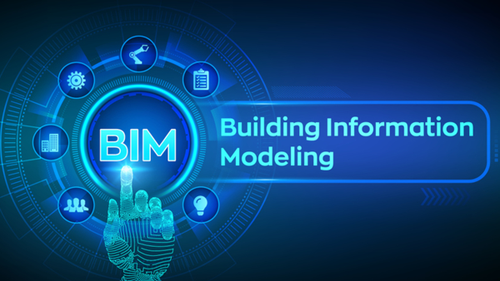
BIM (Building Information Modeling) is an intelligent 3D representation of the physical spaces and assets within a facility. BIM provides the insight to more effectively plan, design, construct, and manage buildings and infrastructure.
Locating the assets is a tedious task for the maintenance team, especially the once which is between/behind the walls ceiling. They might need to grill the walls or remove the fixtures to find out the asset location. BIM with its accurate 3D visualizations help the managers to locate the exact position of the asset. This helps in saving a lot of time and avoid all the possible damages which may occur in locating the assets.
BIM gives the accurate picture of the equipments in a facility with updated data. This will help the maintenance activities to be managed faster.
The benefits of BIM include
Faster and accurate sharing of Information
- Less asset failure
- Effective maintenance
- Effective Planning
- Low wastage
- Data Security
- Improved productivity
- Reduced cost
BAS/BMS: Building automation system / Building management system
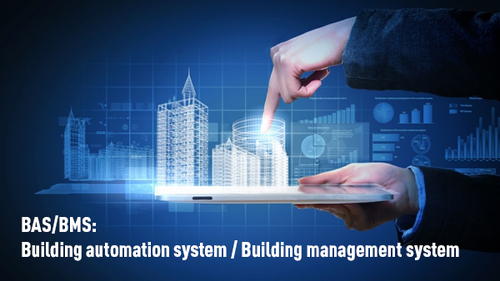
Building Automation System sometimes referred to as a building management systems, serve as a centralized control center for various building systems in the facilities. It is an interlinked network of hardware and software, that monitors and control systems in the facilities. While managing various building systems, the automation system ensures the operational performance of the facility as well as the comfort and safety of building occupants. The major systems controlled by
BAS are
- HVAC Control Controls and manages the thermal comfort
- Lighting Controls the lights (Switch on/ Switch Off) as required
- Ventilation Adjust as per the Occupant comfort
- Security Systems Surveillance Cameras and Access controls
- Fire Alarms Manage Alarms on Fire and smoke control
The basic functions of BAS / BMS includes -
BAS system enables the facility managers to operate the facility cost effective without compromising on the comfort of the residents in the facility. It protects the costly equipment by monitoring centrally. Issues are tracked and solved without any delay. BAS / BMS guarantees the safety of facility operation, while also monitoring and optimizing the use and efficiency of its supervised subsystems to gain operational efficiency.
Providing accurate information on the facility functions like present status, historical data, analysis, displays, and reports on the building systems control and management functions
Let's start with the simple way to create a website.

Interested in Domitos? Get the Features Guide Today!
Domitos, is world's most sought after facility Management System and we look forward to work with. Digitize your facilities today!